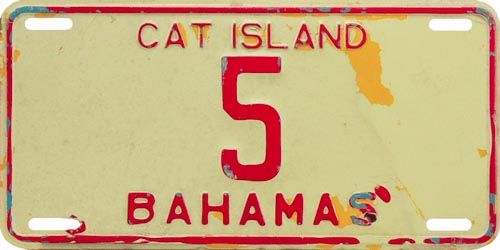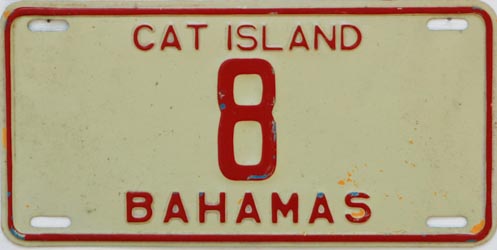1978 - 1980 Issued License Plates
Plates issued in 1978 were red on cream. Many plates were issued both front and rear validation stickers in 1979 and 1980, representing the first time the government used such a renewal process. This is the first issue where things get real interesting for collectors as numerous varieties were produced.
US Made Plates
This is the most common issue found during 1978. These are U.S. made and used a different manufacturer than the previous U.S. made plates.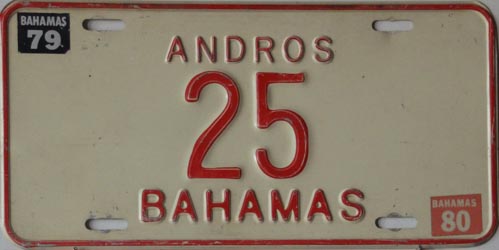

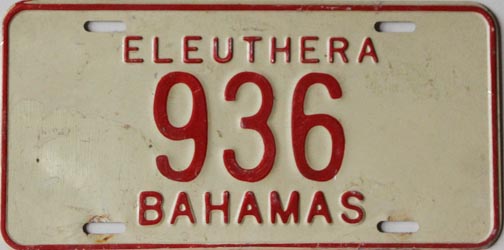





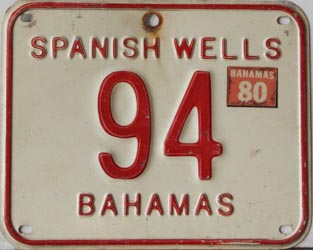


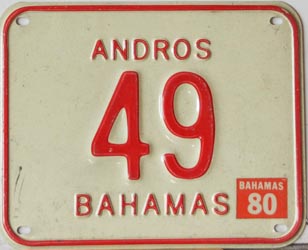
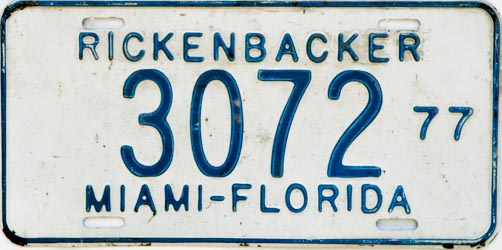
This series was made with the same dies used in for the Rickenbacker Causeway Toll plates.
Island Made Plates

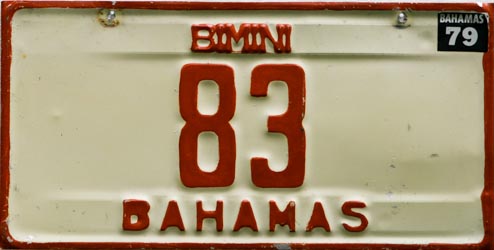


Plates made by the government were replacements for lost plates or additional plates beyond those ordered from the U.S. manufacturer. These plates typically were made using very thin metal, have square corners, no bolt slots, and were made using the crude male-only dies. Because of the light embossing, it is very common for the roller to either not touch the letters or fill them completely. The Grand Bahama #7 plate is a replacement for a lost plate as the mate to this plate (which is somewhere in ALPCA-land) is of the U.S. made variety.
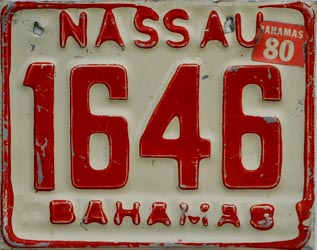

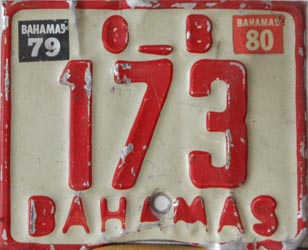
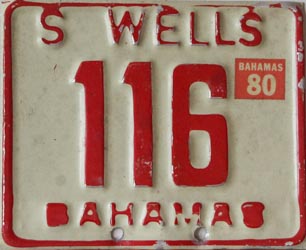

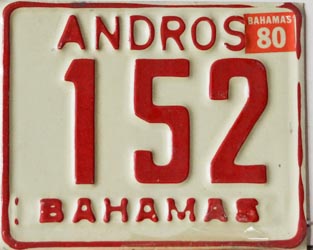 The large dies on the island-made plates led to some creative island naming on the motorcycle license plates.
The large dies on the island-made plates led to some creative island naming on the motorcycle license plates.
Two new dies used to emboss the island designation and "Bahamas" were introduced for these Government made plates, making the total number of dies three. Both of these used the same dies for the numerals.
Hybrid Plates

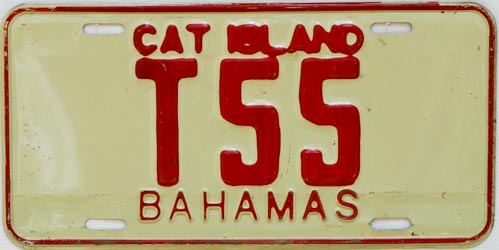

As part of the plate contract, the U.S. supplier shipped over a number of plates consisting of "Bahamas" and the rim pre-embossed and the remainder of the plate blank. The government would subsequently add the island name and the serial on an as-needed basis. Because their own dies were used on these plates, it is common for the island name and serial to be sloppy, while the border and "Bahamas" to remain crisp.

Here is an example of a San Salvador island hybrid motorcycle license plate. The "Bahamas" and border were made in the U.S. and the island name and serial were applied in the Bahamas.

Although most of these plates were roller-painted, some were hand-painted. These can be identified by the cleaner lettering (as the paint did not spill into the lettering) and visible brush strokes.
Repaints

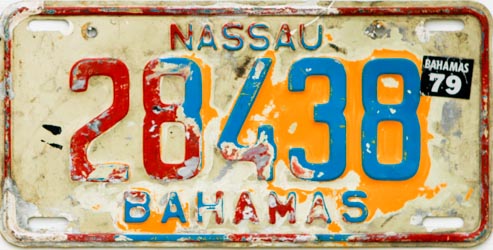
These are turned in 1976 and 1977 issues repainted by the government red on cream and then reissued. In some cases the plates were not properly cleaned before repainting, so the paint would flake.
Hand-painted repaints also exist.
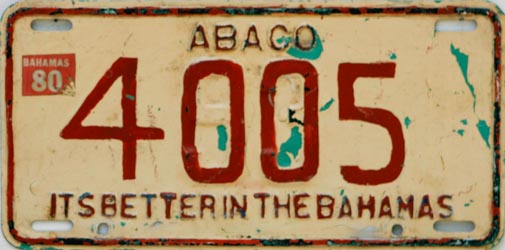
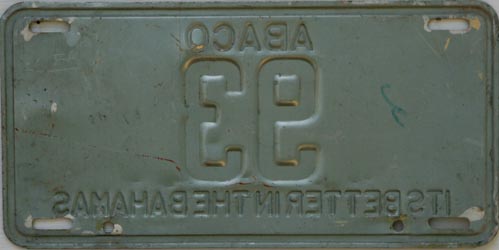

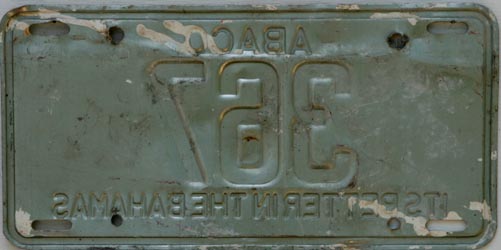
Looking at the above plates (I've included both front and rear photos) from Abaco, one thing to note is that the serial is 4,005. Abaco only had 380 trucks registered in 1978. We can guess is that the local administrator could not get government issued plates in a timely manner so choose serials well outside of the range of plates numbers that could have been issued until the next replating (as they would not have known when that would be).
Hand-painted Flats


Although by law all truck and passenger plates were required to be embossed, various flats exist. Looking at the style of all the flats, it would indicate that these were supplied by a single source. Careful note of the island name and "Bahamas" on the flats show that it follows the same font used in the 1976 series. Our guess is that a replacement was needed and the individual contacted this person instead of ordering a replacement from the ministry.
1976/77 Dies
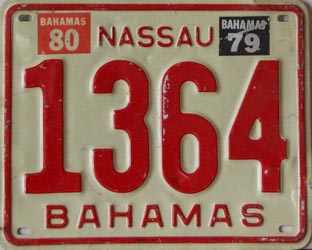

A small batch of plates using the 1976/1977 motorcycle dies exist. These do not appear to be repainted plates as there are no colors under the red and cream (which would be there if the plates had been repainted).
Validation Stickers

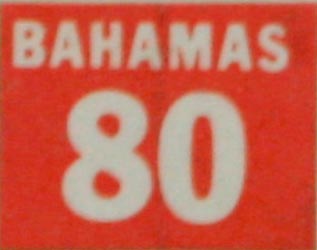
Here are some examples of plates that were issued both front and rear validation stickers:


Miscelaneous
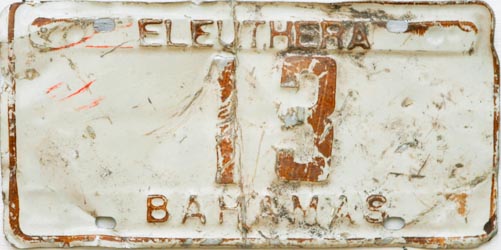
In case you ever wonder what happens when plates sit out in the Caribbean sun for an extended time!
Where things get interesting is when you start examining a run of plates issued to an island. Cat Island, for example issued #4 as a flat, #5 as a 1976 repaint, #6 and #7 are government issues, and #8 as a 1976 repaint!

